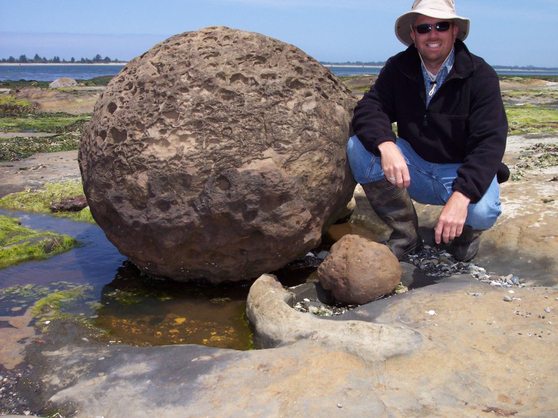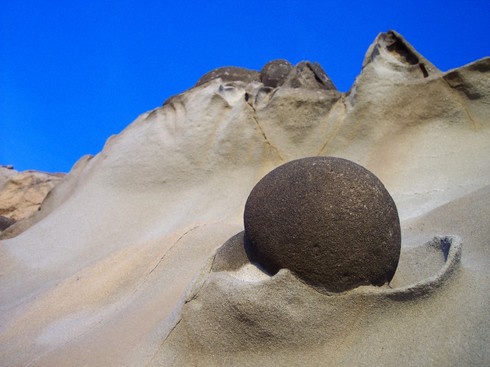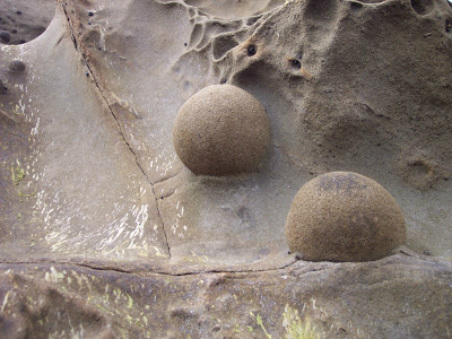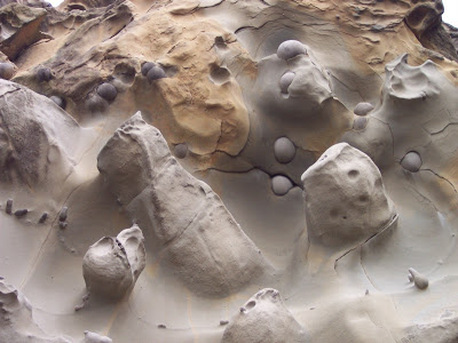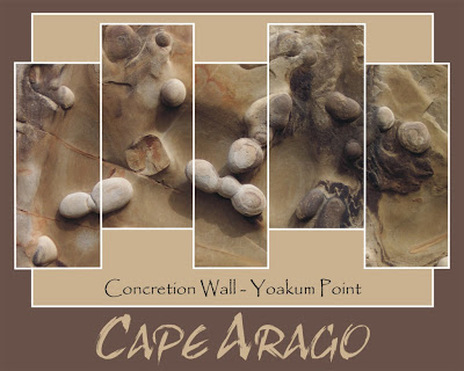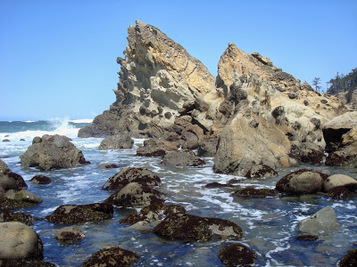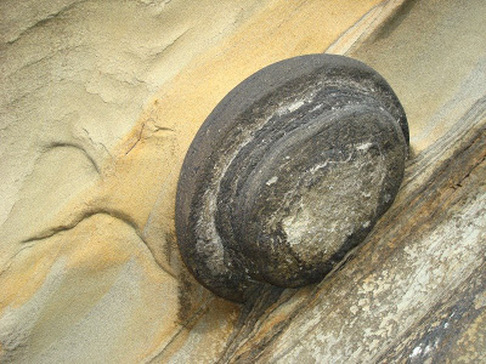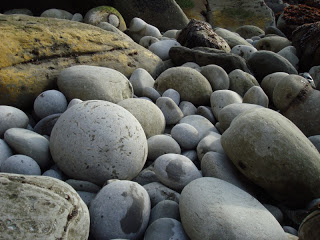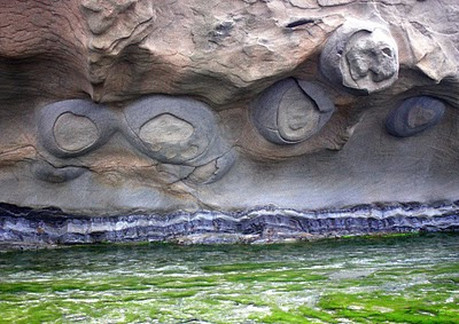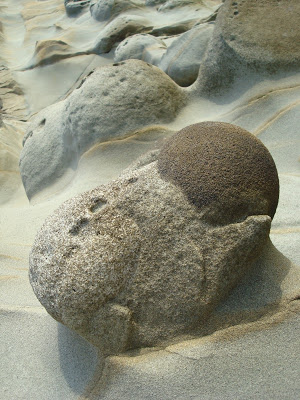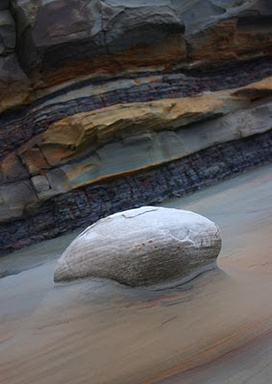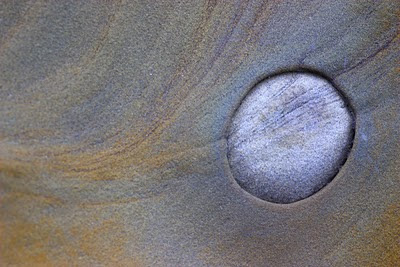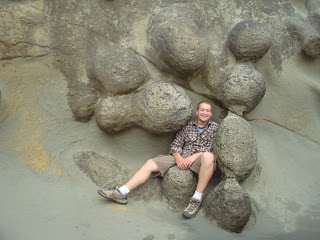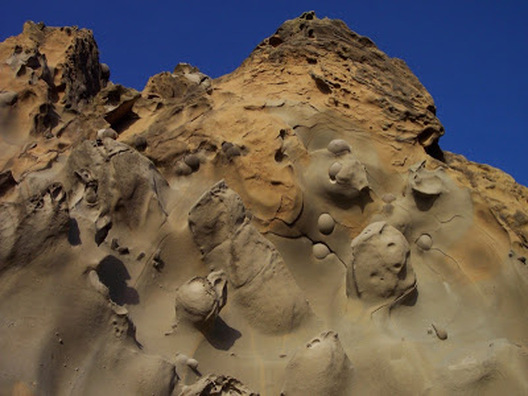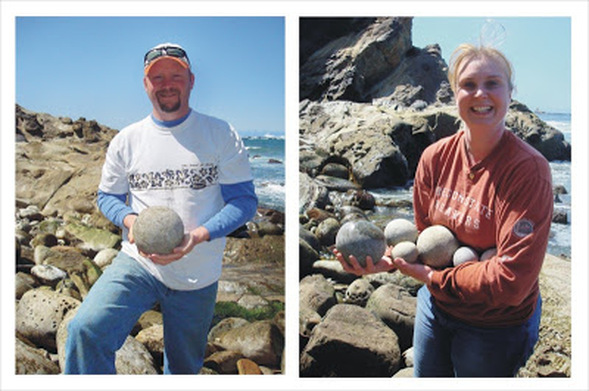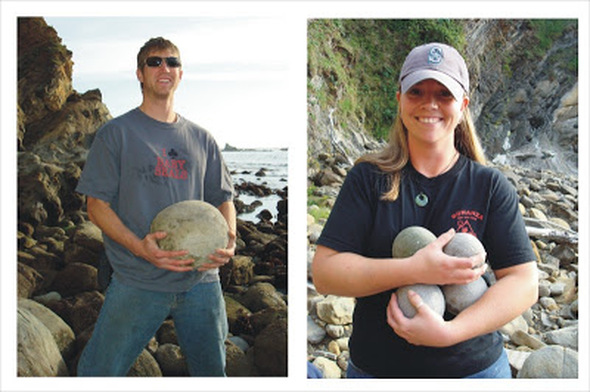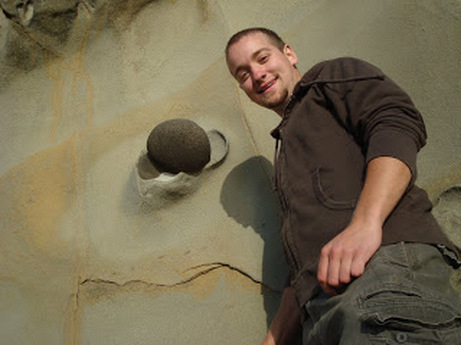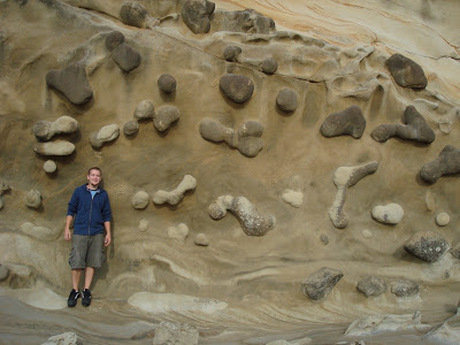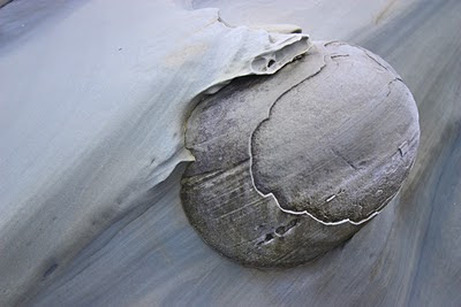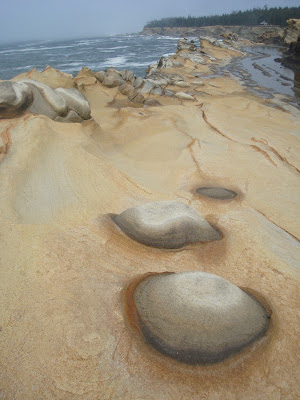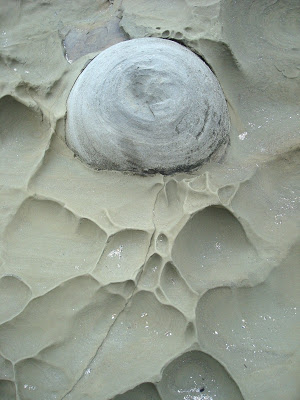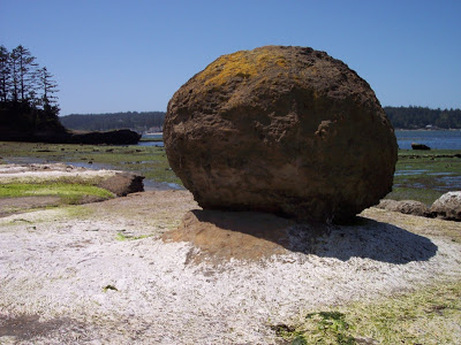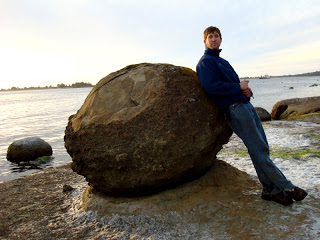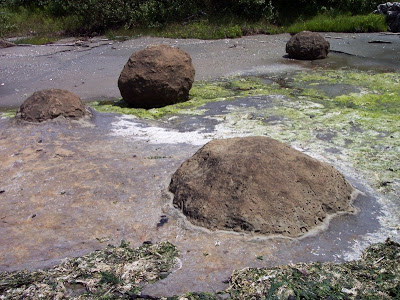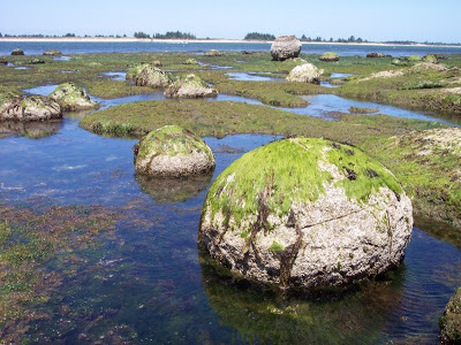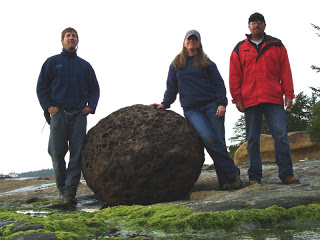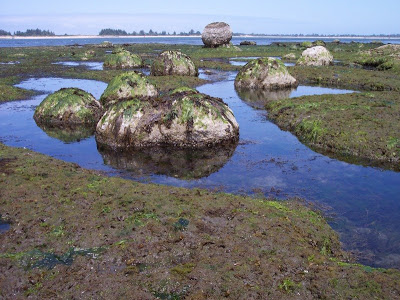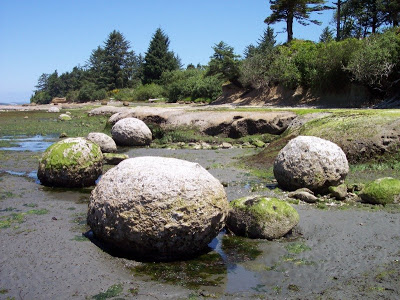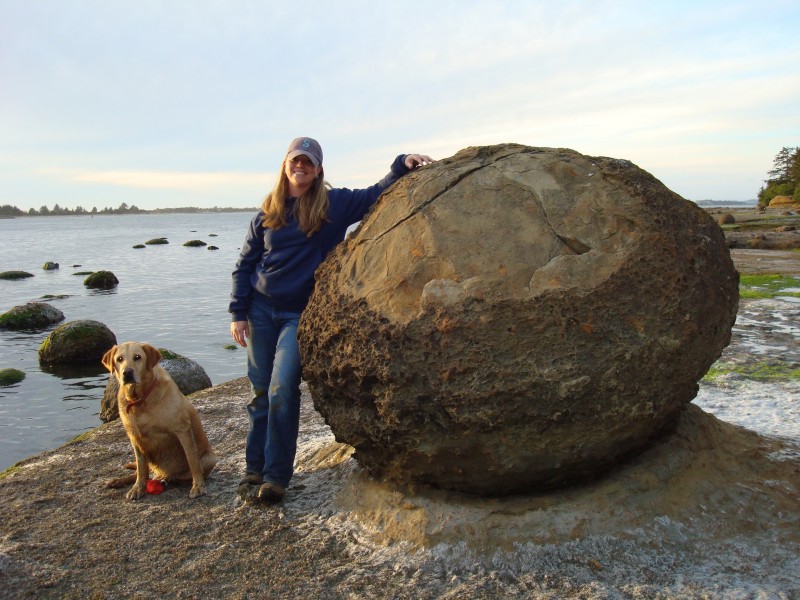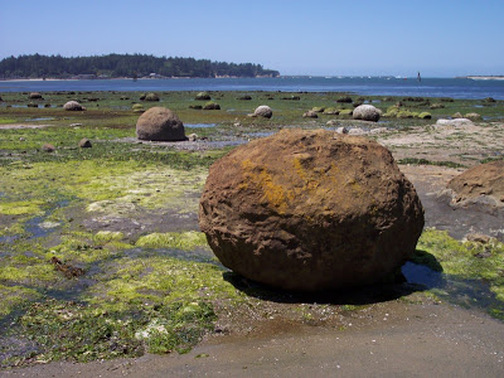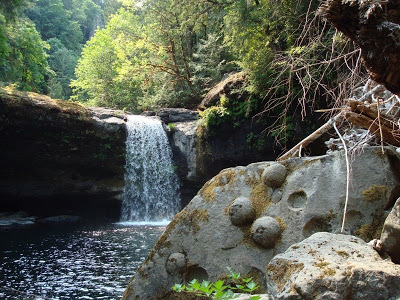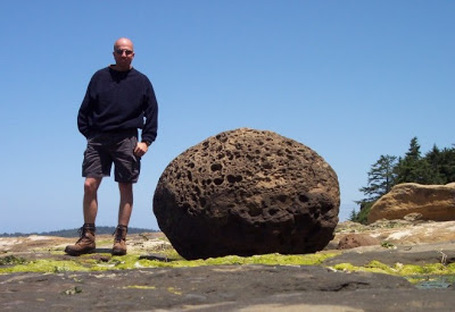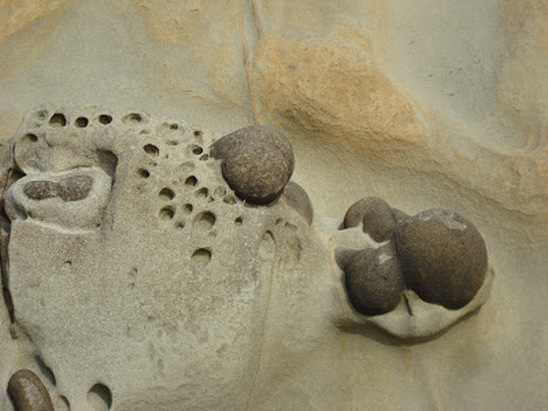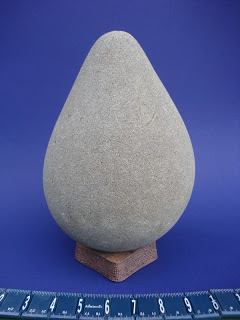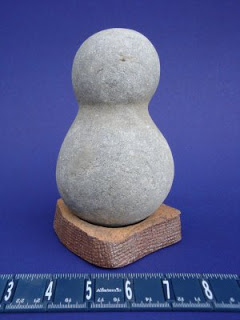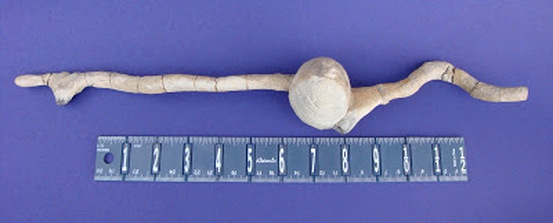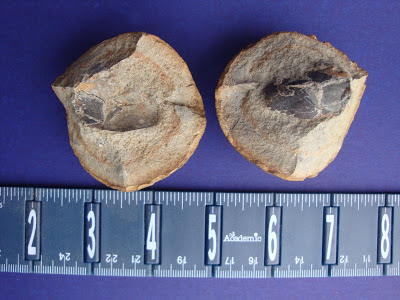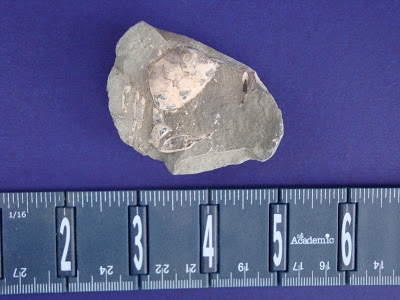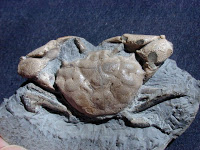The word "concretion" is derived from the Latin words "con" – meaning "together" – and "cresco" – meaning "to grow."
| Concretions are world wide and to the surprise of many, the rock is very common. In the geologic state of Oregon, the largest concentration of concretions can be found along the Cape Arago Headland sandstone cliffs, especially at Yoakum Point, Sunset Bay, Norton Gulch, Shore Acres, Concretion Cove, Simpson Reef, Cape Arago, and the "giants" at Fossil Point. |
| Concretions are commonly misunderstood geologic structures. Descriptions dating from the 18th century attest to the fact that concretions have long been regarded as geological curiosities. It is also a misunderstanding that the round rocks form by rolling down the river or the ocean waves move the rocks in the surf, eroding the rock down to a round rock. They formed round, and can be found in the cliffs round. |
| The round light colored rock, (left), is slowly eroding out of the sandstone cliff at Shore Acres State Park. This concretion recently revealed itself. Eventually it will erode completely out of the cliff...but when, only time will tell. In the photo, (left), Gus is sitting amongst a large collection of concretions partially embedded in a sandstone cliff on the south wall of Simpson Beach at Shore Acres State Park. It is hard to determine what decade matter started these concretions, but it could be as small as a grain of sand, or crab, fish, and possibly a shell. |
by pressing PLAY
The "Giants"
| These giant concretions do not indicate that the nucleus that started the formation is of a large format. These rocks could have also formed around the same size leaf, tooth or crab as those of the baseballs and bowling balls. Their size though could indicate the conditions were perfect to form over a longer period of time...allowing them to gain "giant" status. |
| In the photo on the (right), a giant concretion is slowly eroding out from the softer bedrock which entombed it. Only the rock's top 1/4 is currently exposed. Once out, the rock will be one of the largest "giants" in the area. Just how long it will take to be completely freed will depend on mother nature. |
